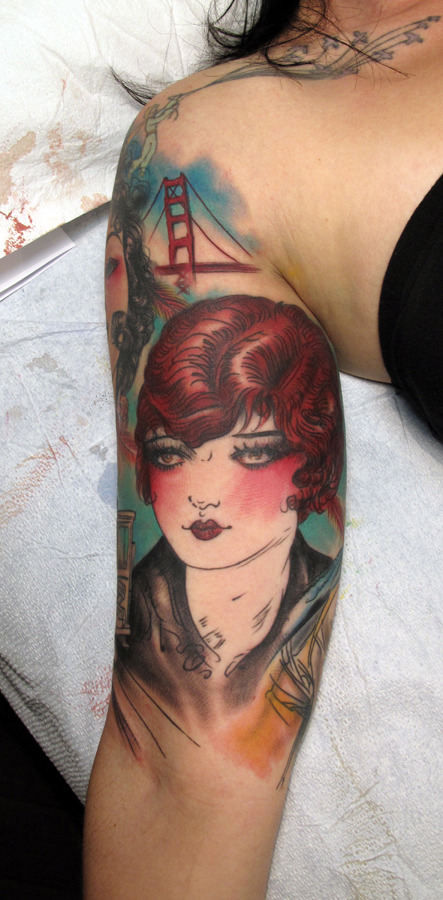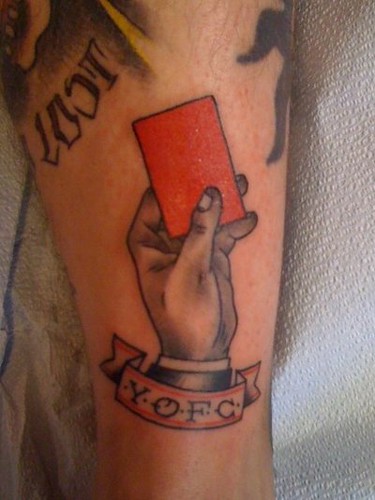Idle Hand Tattoo Biography
Source:- Google.com.pk
Idle Hand is a custom tattoo studio located in the Lower Haight since 2004. Owned and operated by Holly Ellis.
With 7 artists there is a wide range of styles to choose from and we offer a clean, fun yet professional environment for all of our clients.
While the artists in our shop are generally busy with appointments we do welcome walk-ins. If you'd like to make an appointment please contact each artist individually. There is a minimum deposit of $100 to make an appointment. (Deposits are non-refundable and may vary depending on the artist and the tattoo. We require 24 hours notice on cancellations). We are cash only and do not take credit cards or personal checks.
Dia de los Muertos is a Mexican holiday, known as the “Day of the Dead” in English. The festival is symbolized by decorated skulls. These are often called sugar skulls (cavaleras), as the decorations are edible, decorated with icing sugar and sweets. Sugar skulls have become a popular tattoo design, combining death and beauty for a deeply symbolic tattoo. Sugar skulls originally symbolized a departed soul, but have come to symbolize a relationship with the afterlife and an acceptance of one’s own mortality.
Henna is considered an herb, and has long been known to have healing qualities. It is used topically and usually not ingested or inhaled. In ancient times it has been applied to the skin surface for such ailments as headaches, stomach pains, burns (including sunburns), open wounds, as a fever reducer, athlete's foot and even the prevention of hair loss. It is also a sunblock and has been used on the noses of animals to prevent sunburn. Another use of henna would be to apply it to goat skin bags, after they have been salt-cured. It "insect-proofs" or "moth-proofs" the bags by making the skin poisoned or inedible.
Tattooing was introduced at Auschwitz in the autumn of 1941. As thousands of Soviet prisoners of war (POWs) arrived at the camp, and thousands rapidly died there, the SS authorities began to tattoo the prisoners for identification purposes. At Auschwitz II (Birkenau), the SS staff introduced the practice of tattooing in March 1942 to keep up with the identification of large numbers of prisoners who arrived, sickened, and died quickly. By this time, the majority of registered prisoners in the Auschwitz complex were Jews. In the spring of 1943, the SS authorities throughout the entire Auschwitz complex adopted the practice of tattooing almost all previously registered and newly arrived prisoners, including female prisoners. Exceptions to this practice were prisoners of German nationality and “reeducation prisoners,” who were held in a separate compound. “Reeducation prisoners,” or “labor-education prisoners,” were non-Jewish persons of virtually all European nationalities (but at Auschwitz primarily Germans, Czechs, Poles, and Soviet civilians) who had run afoul of the harsh labor discipline imposed on civilian laborers in areas under German control.
Idle Hand Tattoo For Girls For Women Tumble Words Quotes For Men Design Designs Writing


Idle Hand Tattoo For Girls For Women Tumble Words Quotes For Men Design Designs Writing


Idle Hand Tattoo For Girls For Women Tumble Words Quotes For Men Design Designs Writing


Idle Hand Tattoo For Girls For Women Tumble Words Quotes For Men Design Designs Writing


Idle Hand Tattoo For Girls For Women Tumble Words Quotes For Men Design Designs Writing


Idle Hand Tattoo For Girls For Women Tumble Words Quotes For Men Design Designs Writing


Idle Hand Tattoo For Girls For Women Tumble Words Quotes For Men Design Designs Writing


Idle Hand Tattoo For Girls For Women Tumble Words Quotes For Men Design Designs Writing


Idle Hand Tattoo For Girls For Women Tumble Words Quotes For Men Design Designs Writing


Idle Hand Tattoo For Girls For Women Tumble Words Quotes For Men Design Designs Writing

No comments:
Post a Comment